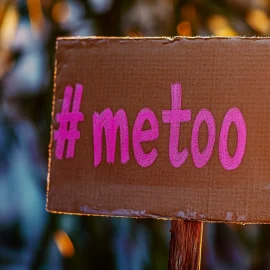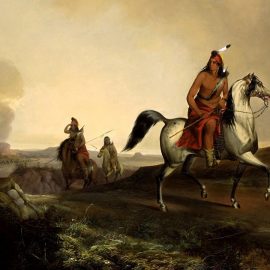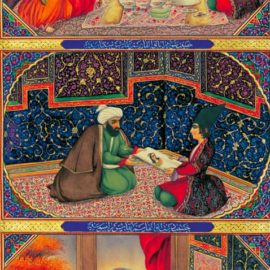

This article is an excerpt from the Shortform book guide to "Unbound" by Tarana Burke. Shortform has the world's best summaries and analyses of books you should be reading.
Like this article? Sign up for a free trial here.
When was the “me too” movement founded? How did Tarana Burke’s daughter influence her to say “me too”?
After Burke’s experience with a sexual abuse victim prompted her to take the first step toward healing, she continued to pursue both personal and professional growth. In her book Unbound, she discusses how a series of betrayals and dead ends in her community led Burke to help others heal by founding the “me too” movement.
Here’s how motherhood inspired the “me too” movement.
Motherhood Empowered Burke to Resist Abuse
When was the “me too” movement founded? The movement was founded in 2006 when Burke used the phrase on Myspace. Burke used the phrase after a tumultuous relationship with her boyfriend and multiple dead ends.
After Burke moved to Selma, her on-and-off boyfriend, Sean, joined her. She reveals that Sean had always been abusive—for example, when they were in high school, he threatened to kill himself if she moved away for college. But she didn’t realize that he was abusive until an incident that occurred after she became pregnant at age 23. During an argument, Sean attacked her, trapped her for hours, threatened to kill her, and finally raped her. She realized that this was different from other fights they’d had—he took advantage of her pregnancy, which made self-defense more difficult. She knew that she didn’t want to expose her child to such an unhealthy relationship, so a few days later, she broke up with him and kicked him out.
Burke Protected Her Child From Community Failures
Burke explains that by virtue of her activism in Selma, she’d built up a community in whose hands she felt she could entrust her child. So after the birth of her child, Kaia, who is nonbinary, she often relied on her community for childcare or brought Kaia to work with her. However, over time, Burke faced a series of major betrayals by key members of her community, including Sanders, the mentor who’d helped her get into college. Let’s explore two of these betrayals:
First, at a community event where Burke was working, Sanders’s adult nephew attempted to molest Kaia. When Kaia and their friend ran to Burke for help, Burke punched the man. Although news of the altercation spread through the community, Sanders sent her nephew to work alongside Burke at the local museum, where Burke often brought her child. When Burke and Kaia saw him waiting outside the museum from their car, Kaia urinated on themself with fear.
Burke addressed the issue with Sanders, who argued that she hadn’t known the whole story and couldn’t deny the man work based on a rumor about petty conflict. This claim was false and only served to deflect blame, Burke adds.
Second, Sanders invited Reverend James Luther Bevel, a civil rights activist who’d worked alongside Martin Luther King Jr., to work with children in Selma. Burke explains that she distrusted Bevel from the start because he made inappropriate, sex-focused statements around the children he taught. Later, Burke discovered that Bevel was a pedophile who’d molested his own children and that Sanders had known this about Bevel when she invited him to join the community. Burke was furious—her own child and her community’s children had been needlessly exposed to serious danger. As a result, she stopped engaging with Sanders.
Betrayals and Dead Ends Prompted Burke to Say “me too”
Burke says that the betrayals she and her child experienced at Sanders’s hands eroded her trust in and commitment to her community. They also helped her recognize the need for anti-sexual violence activism within her community. A second factor also made this need evident: When Burke tried to find resources and support for victims of childhood sexual abuse, she hit dead ends. Burke explains that in her work with children, many girls disclosed that they’d experienced sexual violence. She took several of them temporarily into her home to help keep them safe. But Burke felt helpless to prevent harm from befalling them, and every resource she tried to enlist in helping them, including the local rape crisis center, was unwilling to help.
In a moment of intense dejection after she ran into these dead ends in 2005, Burke prayed for direction. God’s response, she says, was that she must forge a new path ahead: Since she couldn’t protect vulnerable girls from sexual abuse, she would help them heal, using what she’d learned from her own healing journey.
Burke says she realized that to effectively lead such a program, she’d have to be honest and vulnerable about her own experiences of victimization and healing. This required her to finally face the memories she’d stuffed down for years. She dedicated a night to remembering all she’d gone through. At first, this process was agonizing, but eventually, pain gave way to contemplative thought. Her memories provided valuable insights—she realized that empathizing with Maya Angelou had helped her feel less ashamed and that the prospect of empathic connection had emboldened Heaven to break her silence.
With the importance of empathic connection in mind, she came up with the phrase “me too,” which would become a cornerstone of her movement.

———End of Preview———
Like what you just read? Read the rest of the world's best book summary and analysis of Tarana Burke's "Unbound" at Shortform.
Here's what you'll find in our full Unbound summary:
- The origin of the viral phrase “me too”
- What Tarana Burke did to heal from the experience of childhood sexual abuse
- The story of the #MeToo movement






